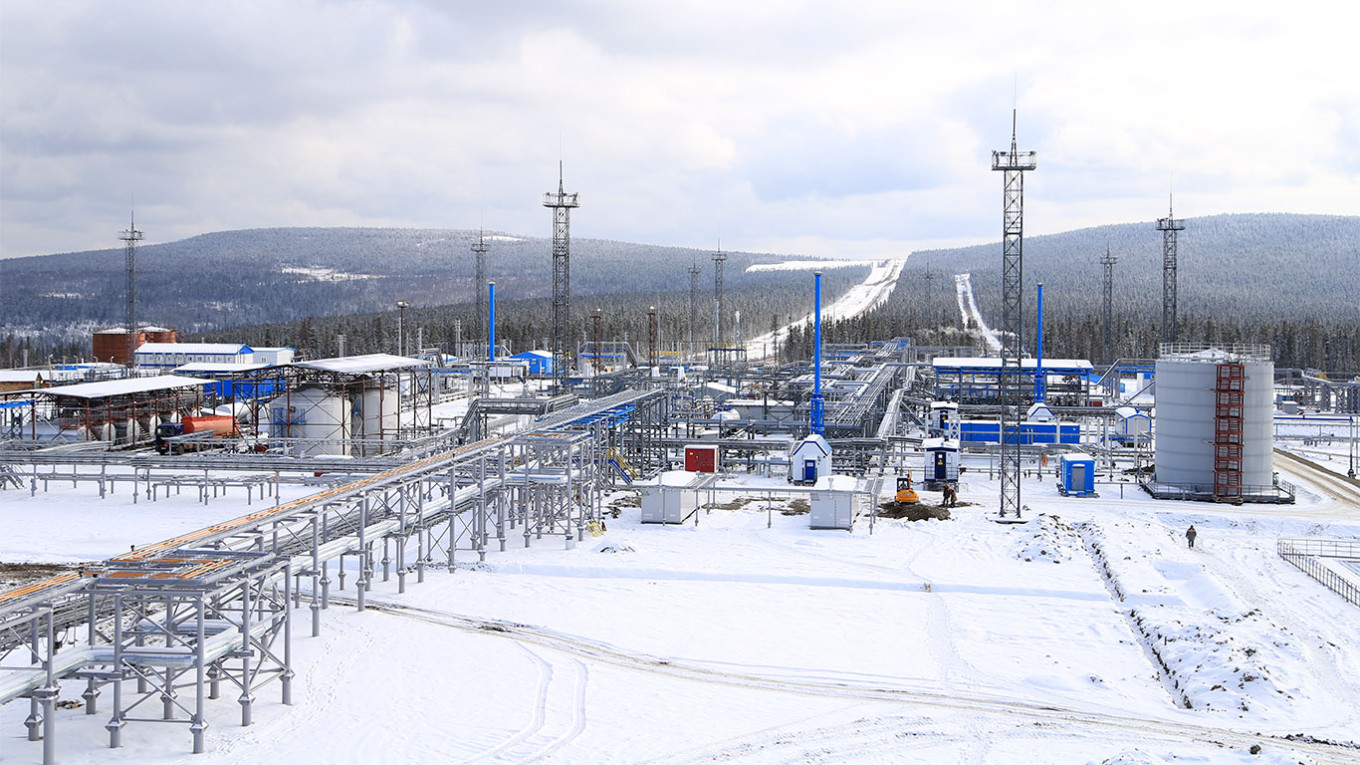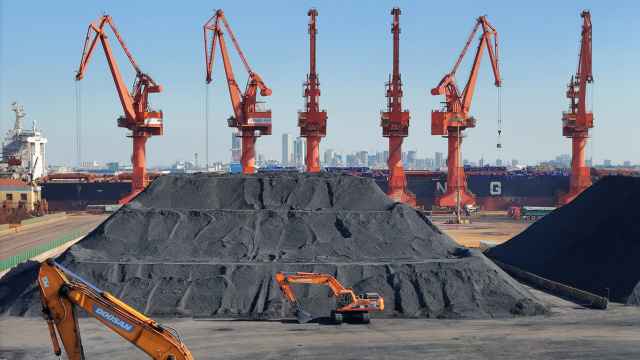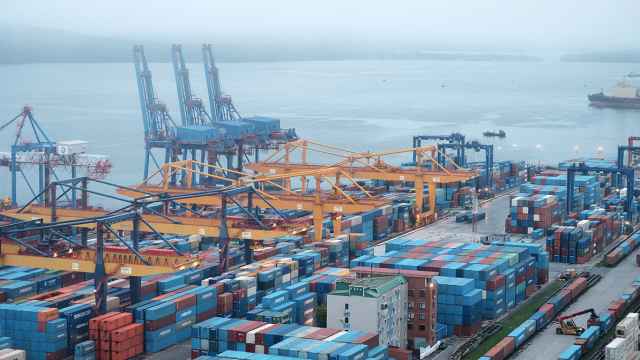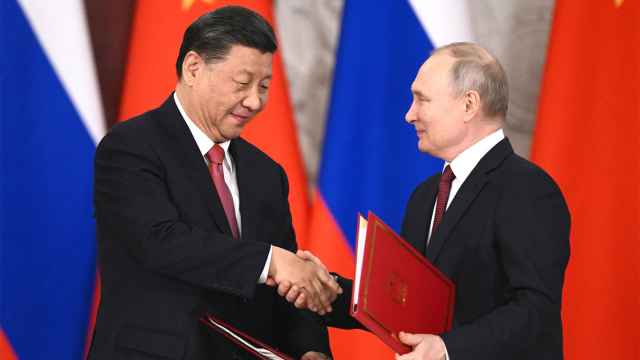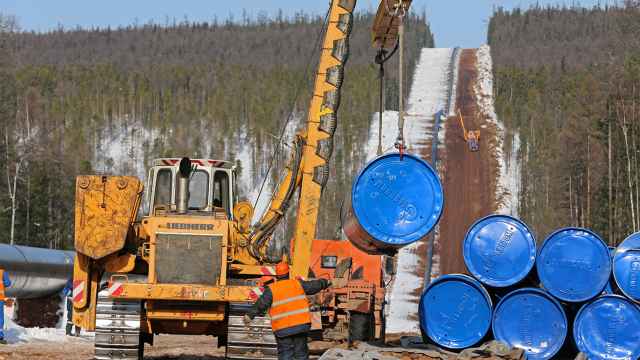Before its invasion of Ukraine, Russia sold over 150 billion cubic meters of gas to the West per year, earning on average $20–30 billion in resource rent on top of the normal rate of return from gas production. Gazprom wasn’t just an important source of budget revenue; it also provided the Kremlin with leverage over the EU. Since the start of the war, however, exports to Europe have dwindled to virtually nothing, and Russia needs to find a venue for monetization of the huge production-ready gas reserves in its Yamalo-Nenets region.
The only alternative to the European market is China. Negotiations with Beijing on building a gas pipeline from the Yamal Peninsula to the Chinese market have been under way for two decades, but now that Russia is at war, those talks may well accelerate and even culminate in the signing of an agreement.
It was Russia that made the first move in the gas war: after sending troops into Ukraine, it began to drastically reduce gas supplies to Europe on a number of thinly veiled technical and commercial pretenses in an attempt to force EU countries to withdraw their support for Kyiv. But the EU had already been preparing to reduce its dependence on gas: in the summer of 2021, Brussels unveiled its Fit for 55 plan, which envisaged a significant reduction in greenhouse gas emissions by 2030 and, accordingly, a decrease in the use of fossil fuels, including Russian gas.
Even before Russian troops entered Ukraine, therefore, it was clear that new markets had to be found for Yamal gas, and China was the obvious candidate. A memorandum on the construction of a pipeline from Yamal to China was signed back in 2006 during Putin’s visit to China, but little progress was made on agreeing the project’s parameters until 2022, when it went from being an opportunity for business expansion to a necessity.
A Pale Imitation
Even if Power of Siberia 2 is successfully implemented, it will not be able to compensate fully for the loss of the European market. In 2019, Russia sold 165 billion cubic meters (bcm) of pipeline gas to Europe and Turkey. Power of Siberia 2’s potential capacity is far smaller, at just 50 bcm.
In terms of profitability, too, the project will lag far behind the former gas trade with Europe. The profitability of gas supplies to Europe depended on the country, but in 2015–2019, Germany — the key market — paid an average of $220 per 1,000 cubic meters for its gas imports. Gas prices correlate in general with oil prices, historically through explicit formulas, and more recently through market mechanisms, so it’s worth noting that the average price of Brent in that same period was $57 per barrel.
There were three routes used to deliver gas from Yamal to Germany. One of them — through Belarus and Poland — was not representative: the tariffs on that route were artificially low for a number of reasons. The second route was to Vyborg near the Finnish border, and then under the Baltic Sea via the Nord Stream pipeline. The third was through Ukraine, Slovakia, and the Czech Republic.
The cost of supplying gas via Nord Stream was $65 per 1,000 cubic meters, compared with $85 through Ukraine. Since Germany was paying $220, the netback (i.e., gas revenues minus transportation costs) was $155 or $135, respectively, per 1,000 cubic meters of gas before the deduction of the mineral extraction tax (MET) and export duty.
The same calculations for China are based on the price of Brent oil at $60 per barrel, and the price formula used in the contract with China for the original Power of Siberia pipeline, which delivers gas to China from eastern Siberia. This results in estimated average revenue of $170 per 1,000 cubic meters.
As for the cost of delivery to China, the planned length of Power of Siberia 2 is 2,600 kilometers through Russia and another 950 kilometers through Mongolia. For the purposes of these calculations, we will assume that both sections will be built by Gazprom and its contractors, with a similar tariff structure (in reality, it may be lower in the Russian part of the pipeline, but that makes little difference to the given calculations). Nord Stream, as a project with foreign shareholders, and Balkan Stream — an extension of TurkStream that was built and operated in Bulgaria by BulgarTransGaz — serve as reasonable benchmarks for determining the tariff.
The estimated cost of Power of Siberia 2 can be calculated by taking the cost of the original pipeline and scaling it to the longer length and higher capacity of its successor. The relationship between the unit tariff and the unit cost on the two European pipelines is then used to estimate the transportation cost for Power of Siberia. In practice, this cost may be slightly lower due to the lower cost of fuel gas used to power the pumping stations. But, again, for these calculations, that factor is unimportant. As an additional check, bottom-up calculations using a cashflow model of the pipeline confirm that these tariffs provide a rate of return of about 12% on the capital, which is in the upper range of returns required for a midstream (transportation) project.
So, the average revenue for gas delivered to the border with China through the Power of Siberia 2 pipeline would be $170 per 1,000 cubic meters. Knowing the estimated length of the new pipeline and calculating the tariff, the cost of transportation can be calculated at $97 per 1,000 cubic meters, meaning that the netback would be $73 per 1,000 cubic meters.
Of course, that’s a lot less than the $135–155 netback from sales to Germany, but $73 isn’t bad either, and it could increase to $100 if Gazprom manages to keep the capital expenditure of building a new onshore pipeline from exceeding that of building Nord Stream across the seabed, which sounds entirely feasible.
Is It Worthwhile?
Natural resources rent is calculated as the excess left after total spending on production and transportation and a reasonable rate of return (i.e., one that corresponds to competitive industries with similar economic risks) have been factored in. The expert consensus on the total cost of gas production at the Yamal deposits ranges from $15 to $25 per 1,000 cubic meters, excluding MET and duties. The regulated sale price for industrial consumers in gas-producing regions is about $40, all taxes included.
Combining these calculations with the parameters of Power of Siberia 2 shows that the gas pipeline could bring in rent of $2.5 billion to $4.3 billion per year. That’s a far cry from the $20 billion per annum in rent lost from the gas trade with Europe, but still a significant amount.
If MET and export duty are levied on these sales at the standard rate (15% and 30%, respectively), then the state would get $76.50 per 1,000 cubic meters exported, which might leave Gazprom in the red after transportation costs, but the government generally issues tax breaks for such projects, including Power of Siberia 1. Even a relatively modest break would make the project reasonably profitable.
It also compares favorably to LNG projects, since the cost of liquefaction at Yamal LNG is close to the median for such projects, and more expensive than U.S. and Qatari projects, for example. This means that even without taking into account the cost of transporting LNG, the pipeline is close in cost to the LNG option.
Power of Siberia 2 may cost less to build than its original namesake. For a start, the first 1,500 kilometers of Power of Siberia 2 could go along the existing pipeline route to Tomsk and Kuzbass, and then along the Trans-Siberian Railway to the Mongolian border followed by the railroad to Beijing.
Secondly, the pipeline will be built by Russian companies in Russian factories using steel made in Russian mills from Russian deposits of iron ore and coal. All of these industries lost their export markets in 2022. Since there are far too few commercially viable alternatives to maintain previous levels, the cost of such services and materials should not be valued at market prices (since there effectively is no market), but at short-term marginal costs.
Russia has plenty of capacity for the construction of pipelines and the manufacturing of corresponding materials. Judging from the construction of Power of Siberia 1, the second project could well be implemented in five to six years (and possibly even faster if work proceeds on multiple sections at the same time).
Power of Siberia 2 will be able to operate at full capacity almost as soon as construction is completed, since all the production capacity previously oriented to Europe and now standing idle already significantly exceeds the pipeline’s estimated capacity. Everything rests solely on the availability of pumping stations. Russian capacity for manufacturing gas turbines (which serve as power sources for pumping stations) is limited, and may be required by the aviation industry, which, due to sanctions, is having to drastically accelerate the process of import substitution for plane engines.
Spanners in the Works
There are, however, two major risks involved. Gazprom has no reasonable alternatives to the oil-pegged formula it agreed to for the first Power of Siberia back in relatively prosperous 2014. That formula guarantees a certain level of profit for Gazprom, but no more. Realistically, there is very little chance of convincing Beijing that this time the price should be higher.
It will also make Gazprom dangerously dependent on one buyer, which will be able to not only dictate the terms of the contract, but also demand changes to those terms in future.
This is a market with many suppliers, and China has plenty of alternatives, even without taking relatively expensive LNG into account. It also buys gas from Turkmenistan, and there is ample room to significantly increase those purchases. The only factor that may deter the Chinese leadership from doing so is the desire to diversify its supply sources.
In any case, China can afford to simply wait until 2025–2026, when significant new volumes of LNG from the United States and Qatar are due to enter the market. As well as lowering gas prices, that might make Turkmenistan and Russia even more accommodating than they are now.
The other major risk is that of future instability in demand for gas. The project’s biggest expense is construction costs, which will have to be recouped over two subsequent decades of operating at full capacity. China’s energy development forecasts are based on demand for gas increasing through at least 2040 and then remaining stable for at least another decade. Many are also predicting the accelerated development of alternative energy, but growth in that sector is expected to come at the expense of coal.
These forecasts may not come true, however. If Chinese economic development beats expectations, that will accelerate the transition to renewable energy sources (RES) and gas consumption will decrease. If it performs worse than expected, cheaper coal will continue to account for a significant proportion of the energy balance.
On the other hand, the overland delivery of gas from Russia — which is increasingly dependent on Beijing — could comprise an additional element of China’s energy security. It will come in useful in the event of a trade war with the West or a situation in which shipping routes for the delivery of LNG are jeopardized for any reason.
The fundamental difference between now and the 1960s–1980s, when the Soviet Union successfully monetized the vast gas reserves of Yamal by building a pipeline to Czechoslovakia, then Austria, and then West Germany, recouping construction costs several times over, is that back then the prospects for the development of the European gas market seemed unlimited. There was no hint that demand for gas would ever start to decline, and indeed, the Russian-European gas trade exceeded all Soviet-era calculations.
Now, however, the gas trade between Russia and China is likely to end by about 2060 or even earlier as a result of the global energy transition. Any hopes of developing this cooperation further (by increasing supply volumes, extending contracts, and so on) amounts to a risky bet that the transition to renewable energy will not happen as planned. In all likelihood, within a few decades, Power of Siberia 2 will become obsolete.
This article was originally published by The Carnegie Endowment for International Peace.
A Message from The Moscow Times:
Dear readers,
We are facing unprecedented challenges. Russia's Prosecutor General's Office has designated The Moscow Times as an "undesirable" organization, criminalizing our work and putting our staff at risk of prosecution. This follows our earlier unjust labeling as a "foreign agent."
These actions are direct attempts to silence independent journalism in Russia. The authorities claim our work "discredits the decisions of the Russian leadership." We see things differently: we strive to provide accurate, unbiased reporting on Russia.
We, the journalists of The Moscow Times, refuse to be silenced. But to continue our work, we need your help.
Your support, no matter how small, makes a world of difference. If you can, please support us monthly starting from just $2. It's quick to set up, and every contribution makes a significant impact.
By supporting The Moscow Times, you're defending open, independent journalism in the face of repression. Thank you for standing with us.
Remind me later.



